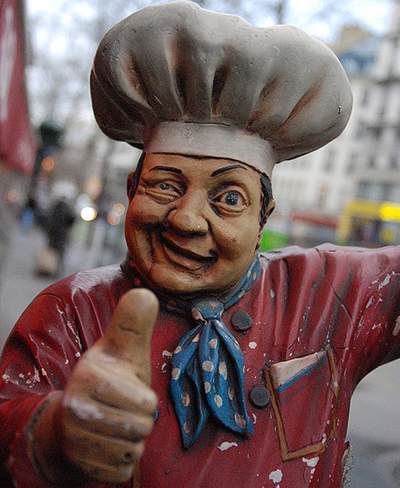Activity 5
Take a couple of minutes to think about the following questions.
What exactly is a stereotype?
How might you define this term in one or two sentences?
 Activity 6
Activity 6
Now read the following definitions of stereotypes. Which one comes closest to your own?
Definition 1
[A stereotype is] a widely held but fixed and oversimplified image or idea of a particular type of person or thing.
(Oxford University Press, 2014)
Definition 2
[A stereotype is] a fixed, overgeneralized belief about a particular group or class of people.
(Cardwell, cited in McLeod, 2008)
Definition 3
Stereotypes offer a security blanket to which one can retreat from complexity.
(Emig, 2000, p. 4)
Definition 4
A stereotype need not conform to reality; rather, it offers people a rough and ready categorization with all the attendant problems of such categorizations.
(Wardaugh, 2010, p. 145)
From the definitions, identify three possible benefits and three possible drawbacks of stereotypes.
| Benefits of stereotypes | Drawbacks of stereotypes |
Here are some thoughts on the definitions you looked at:
1 This dictionary definition describes stereotypes as fixed, widely held (i.e. shared) oversimplifications, which are about a type, not a specific individual. ‘Stereo actually comes from a Greek word meaning ‘solid’ or ‘fixed’, implying that stereotypes are often held unconsciously and cannot be changed at will. Stereotypes may remain stable despite evidence to the contrary.
2 The second definition, from a specialised dictionary on psychology, sees stereotypes as fixed overgeneralisations about a group. The first two definitions, while similar, are also subtly different. Note the use of the term ‘overgeneralisation’ here instead of ‘oversimplification’.
3 Here the emphasis is on the psychological benefits of reducing complexity. By not looking at everything or everybody individually, but at categories or groups with common characteristics, we make our world less complex and easier to cope with.
4 This definition is influenced by the work on linguistic patterns of the sociolinguist William Labov (1972). He sees stereotypes as categorisations, which are oversimplified and therefore not necessarily accurate.
When going through the definitions, did you identify any of the aspects mentioned above? The scholars who came up with the different explanations would not necessarily agree on ways of defining exactly what a stereotype is and some of the aspects are contested.
Glossary
Simplification: trying to make something complex easier to understand (i.e. the starting point is a complex situation or phenomenon).
Oversimplification: simplification that is taken too far resulting in an inaccurate understanding of the situation.
Generalisation: using a specific case or specific cases to explain a general concept (i.e. the starting point is a specific case).
Overgeneralisation: making inferences from specific cases that are not correct in the wider context.
Essentialist/essentialism: the idea that a group (or other entity) has some core characteristics that define the group. These core characteristics are held to be true for all members of the group.
Reductionist/reductionism: the belief that an entity is no more than the sum of its parts, and that any complex system can be reduced to its constituent elements. This is in opposition to a holistic view, which holds that the interplay between the different elements plays an important role in any system.
This article is part of a wider collection of articles and activities on the subject of stereotypes. You can view the full collection here.
Rate and Review
Rate this activity
Review this activity
Log into OpenLearn to leave reviews and join in the conversation.
Activity reviews